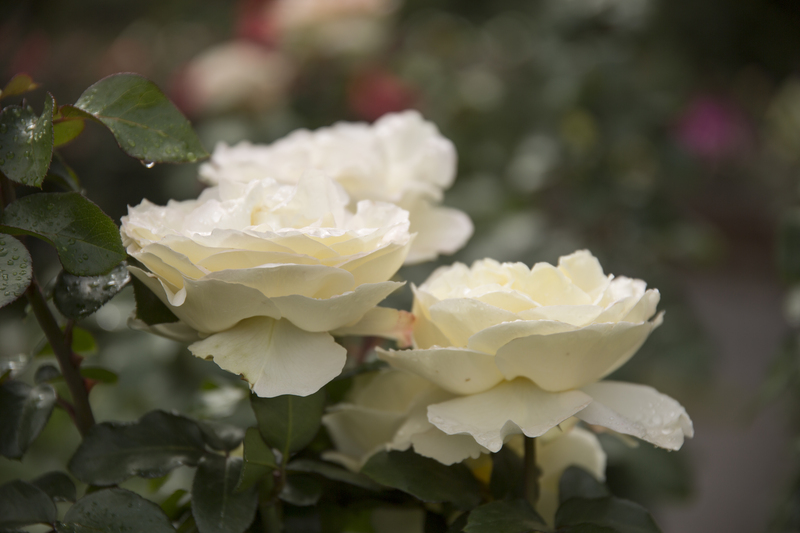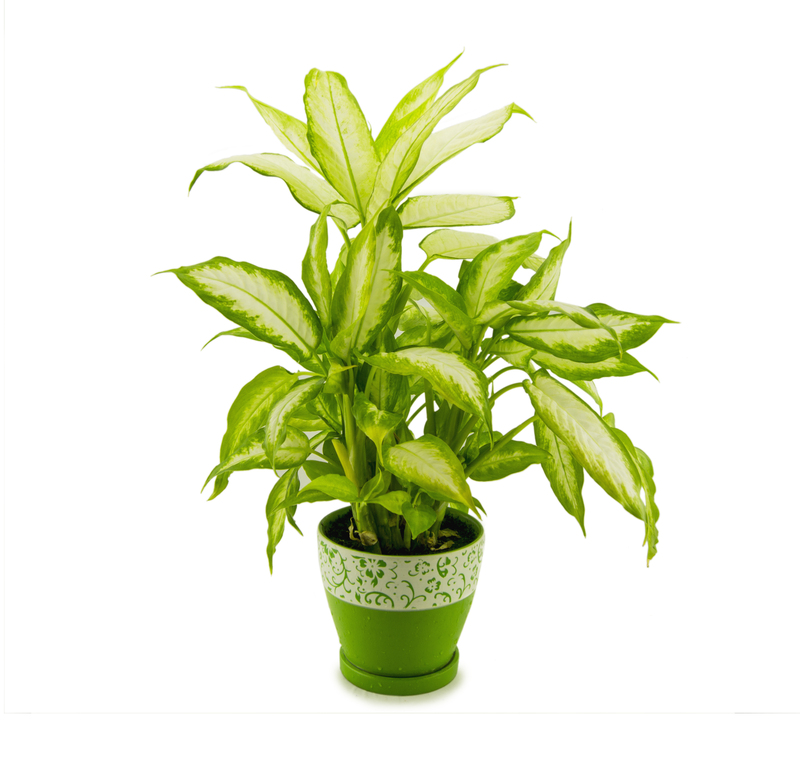Love Your Garden and Your Dog: Tips You Need
Posted on 26/05/2025
Love Your Garden and Your Dog: Tips You Need
Are you a devoted gardener and a passionate dog lover? Tending to a lush green space and having a happy canine companion doesn't have to be a tug-of-war! In this detailed guide, we share comprehensive advice and essential tips for balancing your love for your garden and your dog. Discover how you can create a vibrant, dog-friendly garden, troubleshoot common pitfalls, and design a haven that blooms with happiness for both you and your dog.
Why Having a Dog-Friendly Garden Matters
Gardens and dogs both enrich our lives, but they often present unique challenges when combined. If you're a pet parent with a green thumb, you've likely faced trampled flowers, dug-up bulbs, or chewed plants. Yet, a thoughtfully designed garden can benefit both humans and canines by:
- Providing a secure space for play and exercise
- Offering sensory stimulation and exploration for your dog
- Creating a peaceful refuge for relaxation and bonding
- Encouraging natural behaviors like sniffing and digging (in appropriate places!)
With some planning, your garden can be a *mutually rewarding* space--lush, safe, and fun for all!

Planning Your Dog-Friendly Garden
Assessing Your Space and Your Dog's Needs
Before you dig in, consider both your garden's layout and your dog's behavior, size, and energy level:
- Size and Breed: Larger breeds may need more space and sturdier plants, while smaller dogs might be less destructive.
- Energy Level: High-energy dogs benefit from trails and open spaces. Low-energy dogs are less likely to disrupt beds.
- Age and Health: Puppies and older dogs move differently; tailor paths, ramps, or shaded areas accordingly.
- Natural Behaviors: Does your dog love to dig, chew plants, or chase cats? Anticipate problems and provide alternatives.
Designing for Harmony: Key Elements in a Pet & Plant Paradise
A well-designed garden keeps both flora and fauna flourishing. Use these garden and dog-friendly tips to lay the groundwork:
- Safe Fencing and Borders: Ensure your enclosure is secure to keep your dog in and intruders out. Reinforce areas where dogs love to dig or jump.
- Durable Pathways: Dogs love to patrol perimeters. Install dog-appropriate paths using mulch, gravel, bark, or flagstone (avoid materials that get too hot or sharp).
- Sturdy Plant Barriers: Low borders and dense shrubs can protect delicate beds from curious noses and paws.
- Dog Zones: Designate sunny and shady spots for lounging, and consider digging pits for natural behaviors, keeping flower beds off-limits.
Choosing Dog-Safe Plants for Your Yard
Many beautiful plants can be toxic to dogs. Choosing pet-friendly plants ensures safety without sacrificing style.
Dog-Friendly Plant Options
- Herbs: Rosemary, basil, and thyme are non-toxic and aromatic.
- Flowers: Marigolds, sunflowers, snapdragons, and violets add color and are safe for most dogs.
- Shrubs: Camellias, magnolias, and bottlebrush won't harm your pup if nibbled.
- Grasses: Lemongrass, fountain grass, and blue fescue create texture and are safe choices.
Tip: Always double-check the ASPCA's list of toxic and non-toxic plants before planting anything new!
Plants to Avoid if You Love Your Dog and Your Garden
- Deadly Nightshade family: Tomatoes, potatoes, eggplants (leaves/stems are toxic).
- Lilies, daffodils, foxgloves, and azaleas: Beautiful but potentially toxic.
- Oleander and sago palm: Highly toxic and dangerous if ingested.
- Mushrooms: Wild mushrooms can be deadly--remove any suspicious fungi promptly.
Creating a pet-safe plant palette not only protects your beloved dog but also gives you peace of mind while gardening.
Managing Your Dog's Behavior in the Garden
Teaching your dog to respect your *love for gardening* is possible with positive reinforcement:
- Train Basic Commands: 'Leave it', 'stay', and 'off' help redirect unwanted digging or nibbling.
- Supervise and Redirect: Watch your dog and guide them to dog-friendly zones if they wander towards sensitive areas.
- Reward Calm Behavior: Praise your dog for relaxing in designated spots, and reward them for using the correct potty areas.
- Use Deterrents Wisely: Citrus scents, prickly mulch, or motion-activated sprinklers can discourage trampling in flower beds.
Yard Safety: Dog-Proofing Your Outdoor Space
Garden Hazards for Dogs
To truly love your yard and your pet, you need a hazard-free environment:
-
Chemicals: Avoid pesticides, herbicides, and fertilizers that could harm your dog. Opt for organic or pet-safe alternatives.
Tip: Read labels, and ban access to freshly treated areas. - Compost: Compost piles attract dogs but can contain harmful mold or food scraps. Invest in a dog-proof bin.
- Sharp Tools or Debris: Always secure gardening tools or pruned branches to avoid injury.
- Water Features: Ponds, pools, and fountains should have safe, shallow edges and always be supervised if your dog loves to swim.
Secure Fencing for a Happy, Safe Dog in the Garden
A strong fence is essential when you love your pup and your plants equally, preventing both runaways and garden destruction.
- Height: Some breeds can jump surprisingly high. Aim for at least 6 feet for medium and large breeds.
- Materials: Choose sturdy wood or vinyl; avoid gaps or wire mesh that can injure paws.
- Check for Gaps: Dogs are escape artists. Fill holes and block any dig-points under the fence.
- Gates: Lock gates securely, and do routine perimeter checks.
Enrichment Ideas for a Dog-Centric Garden
Dogs need stimulation just like we crave beautiful gardens. Merge these two loves by adding dog-centric features:
- Agility Equipment: Tunnels, ramps, and balance beams encourage exercise and fun.
- Sensory Experiences: Plant herbs for sniffing, install water play features, or plant dog's favorite safe grasses for chewing.
- Digging Zone: An allocated sand pit keeps digging off your prized flower beds.
- Shady Retreat: Install a dog house or create shade with climbers for hot days.
The more you offer for your dog, the less they'll be tempted by off-limits areas!
Caring for Your Garden with Dogs: Maintenance Tips
- Resilient Lawns: Choose wear-resistant grasses like Bermuda, fescue, or ryegrass for high-traffic patches.
- Repair and Re-seed: Quickly tackle holes or urine spots with patching or re-seeding to prevent lawn damage.
- Rotate Toys: Place chew toys or treats in the garden to distract your dog from plants.
- Clean Up Regularly: Remove droppings and check for hazards to keep your garden hygienic and enjoyable.
Seasonal Care for Dogs and Gardens
Spring and Summer
- Provide fresh water outdoors, especially in hot weather.
- Use dog-safe pest deterrents and avoid exposing pets to freshly treated areas.
- Watch for bee and wasp nests--both garden lovers and dogs can be stung.
Autumn and Winter
- Rake leaves regularly to discourage mold and bacteria.
- Monitor for toxic mushrooms or berries in damp, shady spots.
- Salt and de-icers can harm paws--opt for pet-friendly alternatives.
Bonding and Enjoyment: Love Your Garden and Your Dog Together!
Spending time together outdoors beautifully strengthens your bond with your dog. Here are some ideas for celebrating both passions:
- Picnic Time: Share a meal or snack in the yard, with treats for both you and your furry friend.
- Relax and Read: Bask in your garden's beauty, letting your dog snuggle close or doze in the sun.
- Gardening Companionship: Let your dog watch as you plant or weed--offer breaks for play and training.

Frequently Asked Questions: Love Your Garden, Love Your Dog
Can dogs and beautiful gardens truly coexist?
Absolutely! Dog-friendly gardens are achievable with thoughtful planning and training. Select resilient plants, protect delicate areas, allocate space for canine enrichment, and teach your dog the garden boundaries.
What do I do if my dog keeps urinating on the lawn?
Dog urine can cause brown spots due to high nitrogen. Train your dog to use a specific potty area (gravel or mulch works well), water the spots immediately after use, and periodically reseed damaged grass.
Are there pet-safe alternatives to chemical fertilizers?
Yes! Use composted manure, leaf mold, or commercial organic fertilizers labeled as pet-safe. Mulching with straw or bark can also improve soil health safely.
How can I stop my dog from digging up my plants?
Provide an approved digging area, redirect digging behavior, use barriers, and reinforce 'leave it' commands. Keep dogs occupied with toys and interactive play.
Conclusion: Cultivating Joy for Both Garden and Dog Lovers
Your passion for gardening and your love for your dog can go hand in hand. By creating a pet-safe, dog-friendly garden, you nurture both your green space and your best furry friend. Remember to choose safe plants, design mindful boundaries, encourage good behavior, and relish the daily joys your pet and your plants bring. With these expert tips for loving your garden and loving your dog, you can cultivate an oasis that's beautiful, secure, and thriving for everyone--four-legged or two!
Loving your garden and your dog is possible--start creating your backyard paradise today, and watch both your flowers and your furry friend blossom!



